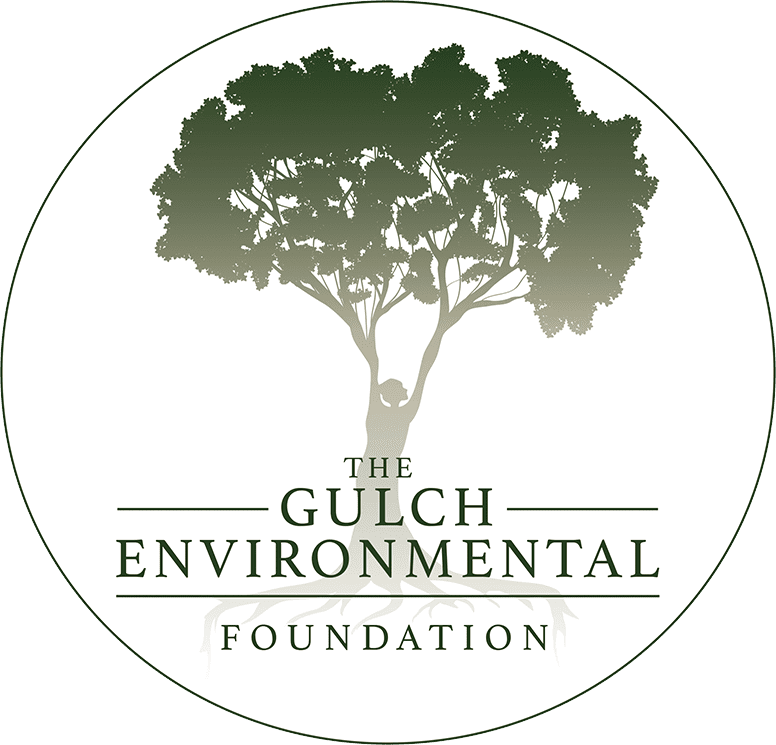2022 Q2 Impact Report

Letter from Founder and Team
Our work over the past year is literally bearing fruit. The initial crops planted at Rainmaker Farm are growing, blooming, and fruiting We can see young peaches on the trees, and recognize corn, squash, zucchini, and okra growing from our Milpa mix. The wheat is ready to harvest.
Our second Farm Day, in early April, was a resounding success with perfect weather and a lot accomplished. 27 people from our sister organizations, Motive Power and 10/6, came to volunteer on the farm. In a single day they planted 160 orchard trees, assembled 4 beehives, installed 2 barn owl boxes, planted 132 of carpet roses, and 100 lavender plants. Huzzah!
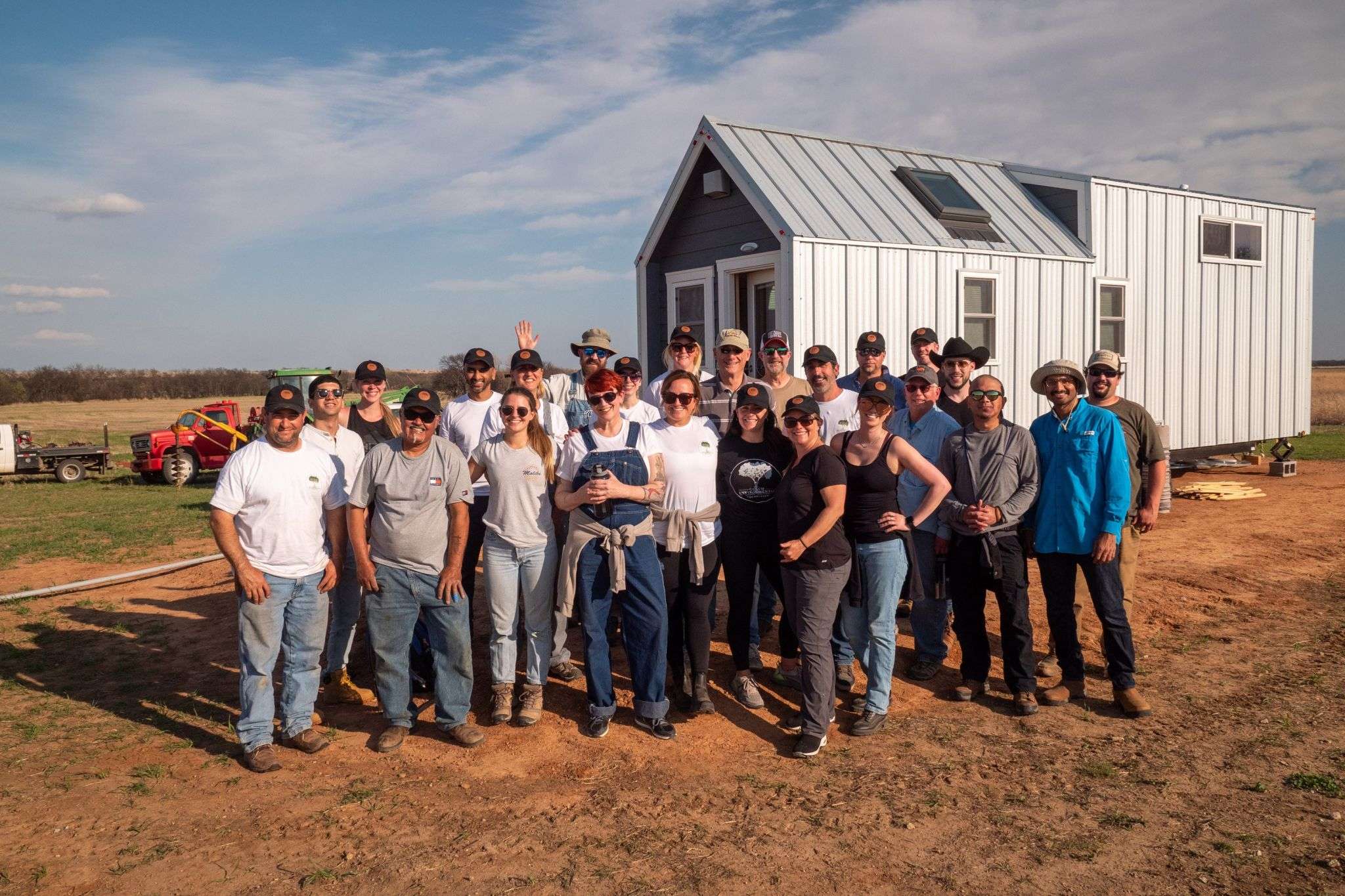
Our team is growing, and we welcome farmer Kellan Hostetler and beekeeper Zachary Royko to the Gulch Foundation. They were both instrumental to Farm Day 2 as well. Kellan’s family are multi-generation farmers, with property neighboring Rainmaker Farm, and he does the on-the-ground farm management at Rainmaker Farm. Zachary cares for our new European Honeybee colonies.
Looking forward we will have our first harvest, continue to develop the farm infrastructure to allow for the incorporation of livestock, and continue our outreach, education, and public involvement – incorporating K-12 school programs.
Our projects are working to do good on multiple fronts: carbon sequestration, regenerating soil, making food for those in need, planting diverse crops for stability in changing times, and providing habitat to support our farm as part of the larger matrix of natural systems in the region.
We could not do our work without donors. Our foundation’s administrative costs are covered through sponsorship donations, and all other donations go directly to on-the-ground project actions.
Summary of Q2 Activities
Our donor-funded activities are broken down into 7 main categories. The activities completed during this quarter of this year are outlined below.

1. University Involvement Support
- Field sampling for soils was conducted in 2021. During Q2 of 2022, processing and analysis of soil samples was completed at the Oklahoma State University labs. A working draft report was obtained in Q2, and final reporting is anticipated at the start of Q3.
- A proposal was obtained for pollinator and invertebrate monitoring, which is being considered for the 2023 growing season.

2. Diverse Planting
- Perennial: Our orchard was planted during a public participation event. Over 3 dozen varieties of orchard trees were planted from multiple species, including peaches, apples, pears, and a variety of nuts. These species were chosen for their current and future suitability for this region, good cross-pollinator pairing, as well as a wide range of phenology (blooming/harvest times) to provide to buffer against weather impacts on harvest. These trees were planted with participation from volunteers during Farm Day 2 in April. A border of 132 of carpet roses was planted along the edge of the orchard to support pollinators.
- Annual: 10-acres were planted using a Milpa-based seed mix. Milpa is a cropping system, originally developed in Mesoamerica, using multiple species that complement each other for both what the plants need for growing, and dietary needs for people. In our milpa mix we used a mixture of 40 different species including types of: flax, radish, turnip, collards, pea, crimson clover, beet, chard, sunflower, okra, popcorn, cowpeas, mung beans, melons, cucumbers, pumpkins, gourds, watermelons, and squash.

3. Livestock Incorporation
- Cattle: Rainmaker farm is still developing the infrastructure to support incorporation of grazing mammals directly, therefore cattle manure was obtained from a neighboring farm and dispersed near the border trees to provide additional nutrients in the otherwise depleted soils.
- European Honeybees: Four honeybee colonies have now been established at the farm as a source of honey and pollination. Four hives were assembled. Two of the hives are traditional Langstroth hives, and the other two are a newer designed called FlowHive. We are comparing the success of these different hive types.
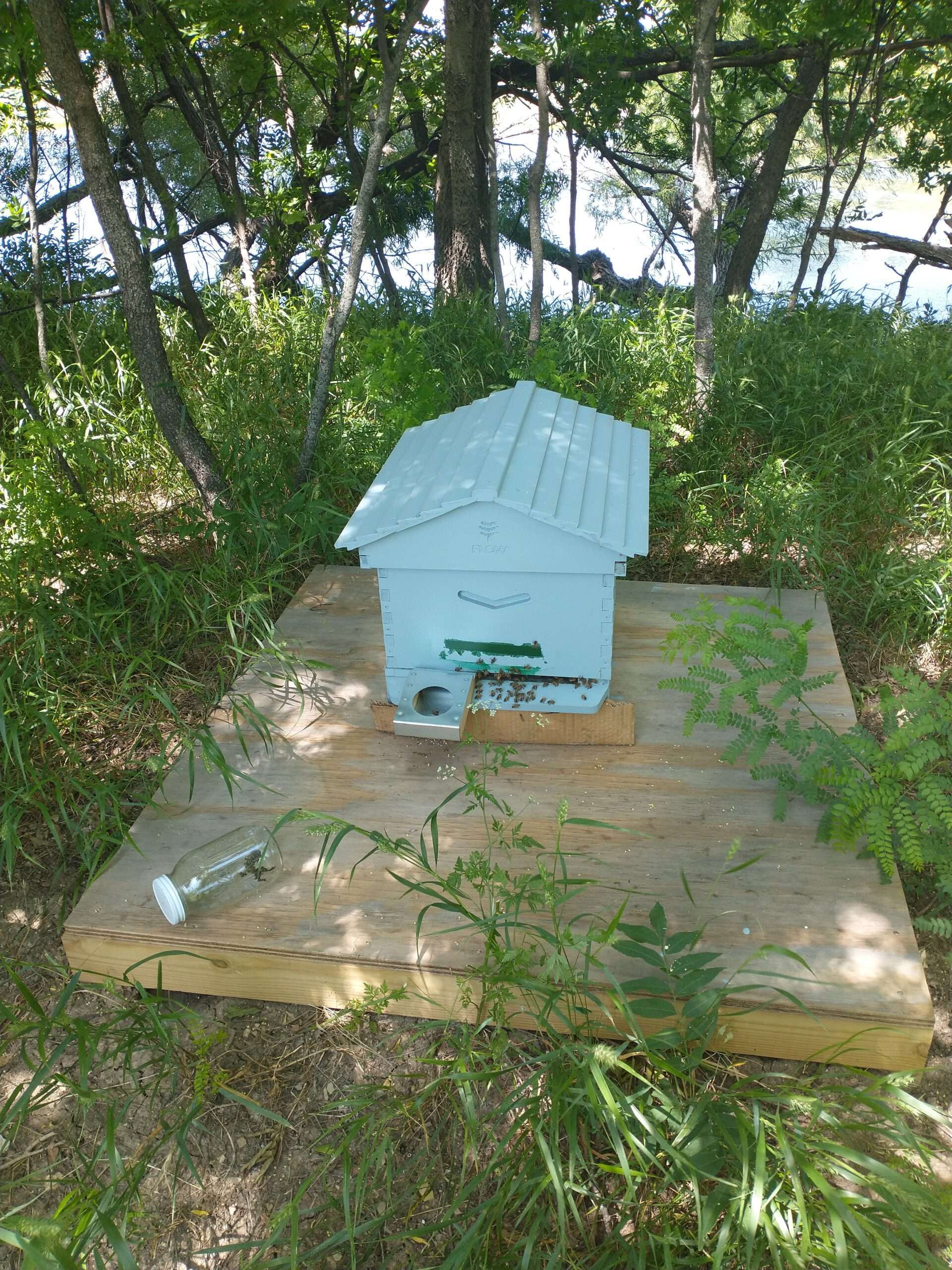
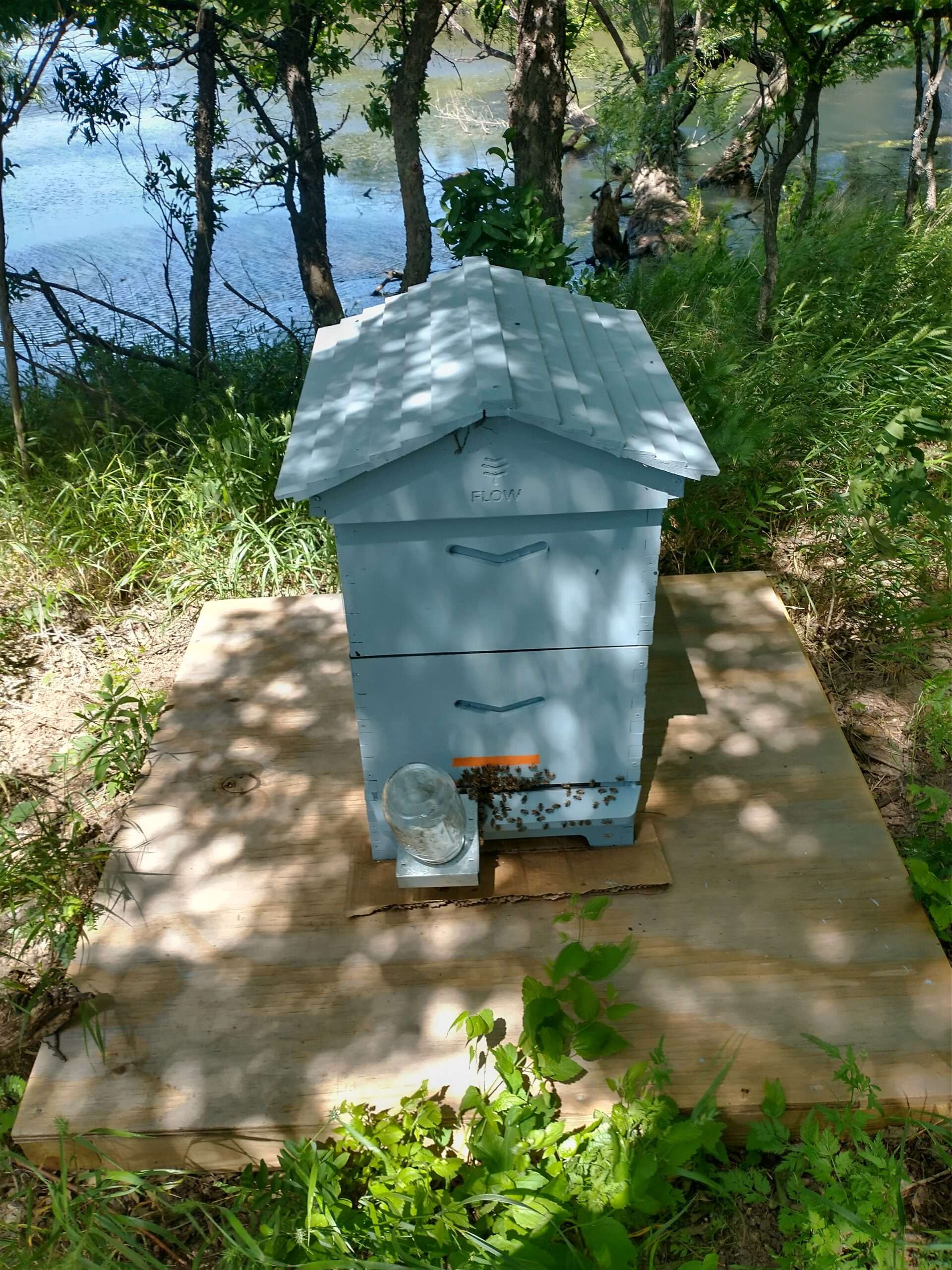
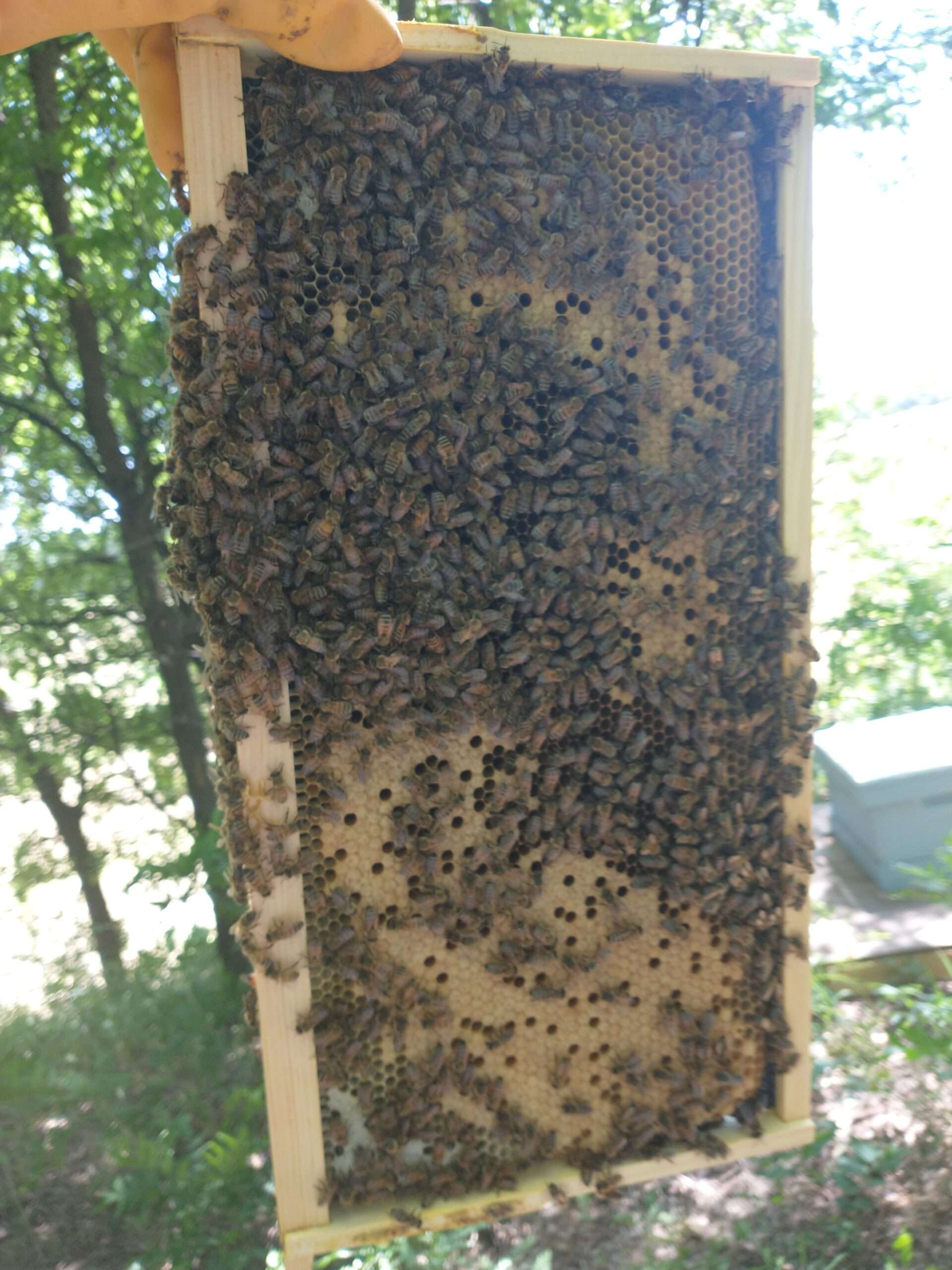
Photo Credit: Zachary Royko

4. Cover Cropping
- Cover cropping is beneficial to regenerative farming in many ways. It protects the soil from erosion. Many species replenish essential nutrients, such as nitrogen, in the soil. The deep roots from native species also help sequester carbon. Cover crops can also provide vital habitat for many native species and beneficial insects. In Q2 of 2022 our cover crops have started to germinate and grow, turning the fields green. These cover crops include 30 acres of soil building cover crop, developed in collaboration with the Natural Resource Conservation Service (NRCS), 54 acres of native grass, and 25 acres of pollinator habitat.

5. Farm Equipment & Supplies
- Additional supplies were purchased for Farm Day activities, for volunteers to assist with planting, protecting, and watering plants, and for site clean-up. These will provide the equipment needed for many future volunteer workdays.

6. Infrastructure
- We have water! The initial onsite water supply was established through a connection to city water.
- The tiny house was anchored to the ground (this is tornado country after all), and a deck was built along the perimeter of the house to provide additional space to gather.
- In addition to the 94 of border trees planted during Farm Day 1, which provide a windbreak and habitat for beneficial birds, during Farm Day 2 we planted 100 lavender plants along the border trees for additional pollinator habitat.

7. Rainmaker Farm
- As Rainmaker Farm is using ecological pest management, we are installing structures that encourage beneficial birds to inhabit the farm. Three Barn Owl boxes were installed. Two on poles, and one mounted to a tree in the riparian corridor. It often takes a few months for the owls to find and use new nest boxes, so we have monitored periodically since placement.
Targets and Goal Tracking
We are on track to meet our targets and goals.

Photo Credit: Kellan Hostetler
Next Steps
In Q3 & Q4 we anticipate the following:
- Harvest our first year’s wheat and warm-season crops.
- Receiving final baseline soil sampling results.
- Updating and installing new fences at Rainmaker Farm to facilitate direct livestock incorporation, which will use as short-term grazing to keep the thatch from building up in the cover crops and native prairie.
- Start preparing the infrastructure for poultry, which will provide natural pest control, fertilizer, and eggs.
- Developing additional water sources (water catchment, solar wells, etc.)
- Continue our outreach and education efforts, incorporating K-12 farm visits.
